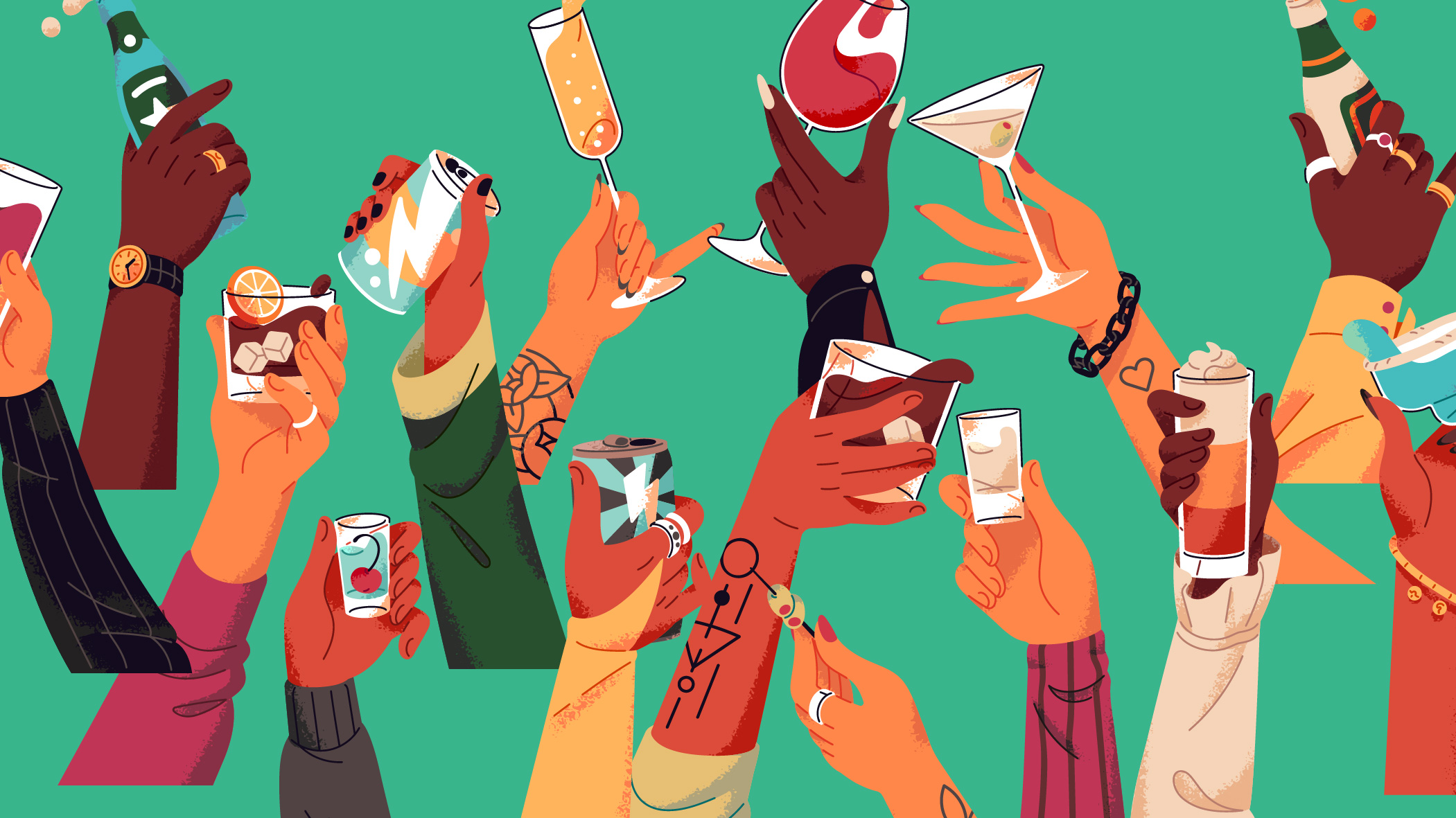We’re drinking boxed wine, we’re sipping cannabis soda, and sometimes? We’re not putting booze in our booze at all. The old rules of the beverage industry are down the drain.
Here’s a six-pack of trends to help quench your curiosity about what is next…
01
Seltzer or Cocktails?
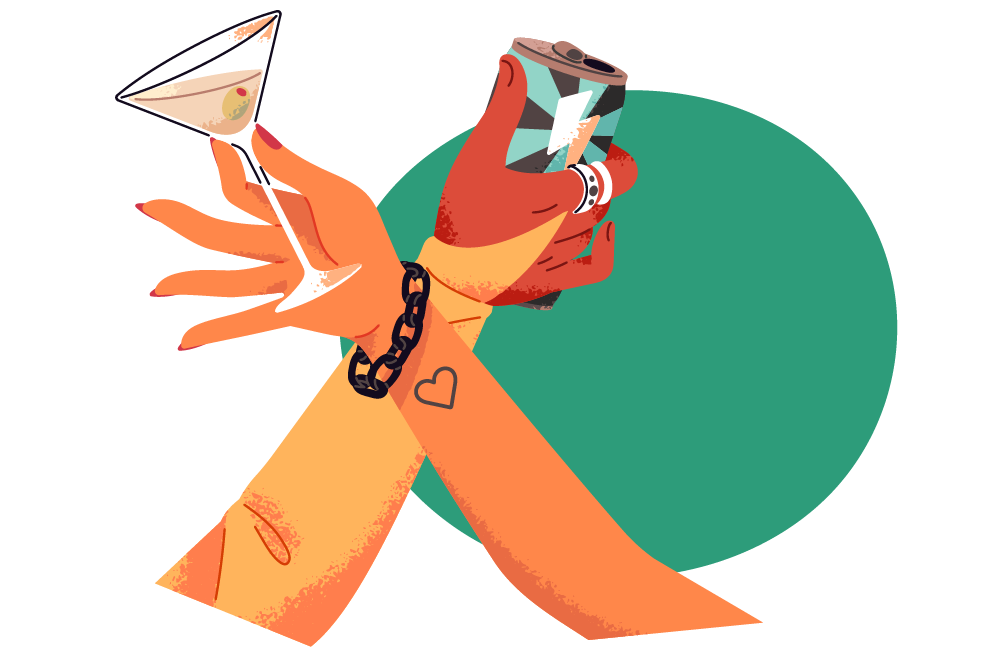
The packaging revolution lives on! But like any revolution, its dynamics are subject to change.
Four years after 2020 brought about the meteoric rise1 of hard seltzer, the bubbly malt beverage has seen the spinoffs of its success — namely Ready-to-Drink cocktails – encroach on its market share. In 2021, we hit peak hard seltzer (for now…) as opportunities opened up for similarly packaged cocktails. These spirit-based RTD cocktails are enticing some of the consumer base that was established by malt based seltzers when they changed the game with their fresh approach to packaging. Many liquor stores now stock a ready-to-drink whiskey cocktail consisting of Jack Daniel’s Tennessee Whiskey and Coca-Cola Zero Sugar soda, as well as a host of smaller artisan cocktail brands. However, seltzers still own a ton of the market2 – the fact that RTD cocktails are in doesn’t mean hard seltzer is out.
Rather, the category is going through a balancing of forces and industry research groups expect seltzer will ultimately stay strong after underperforming brands are shaken out of the mix.
Interestingly, in contrast with the “sober-curious” trend we’ll discuss later, seltzer leaders like Truly and White Claw have found success by offering higher ABV options, in part to emphasize the value of malt based seltzer over more “premium” RTD cocktails.
In any case, the combined category remains a force to be reckoned with – showing the rewards that await those willing to play with packaging. Which brings us to the next trend.
02
Boxed wine is having a moment (!?)
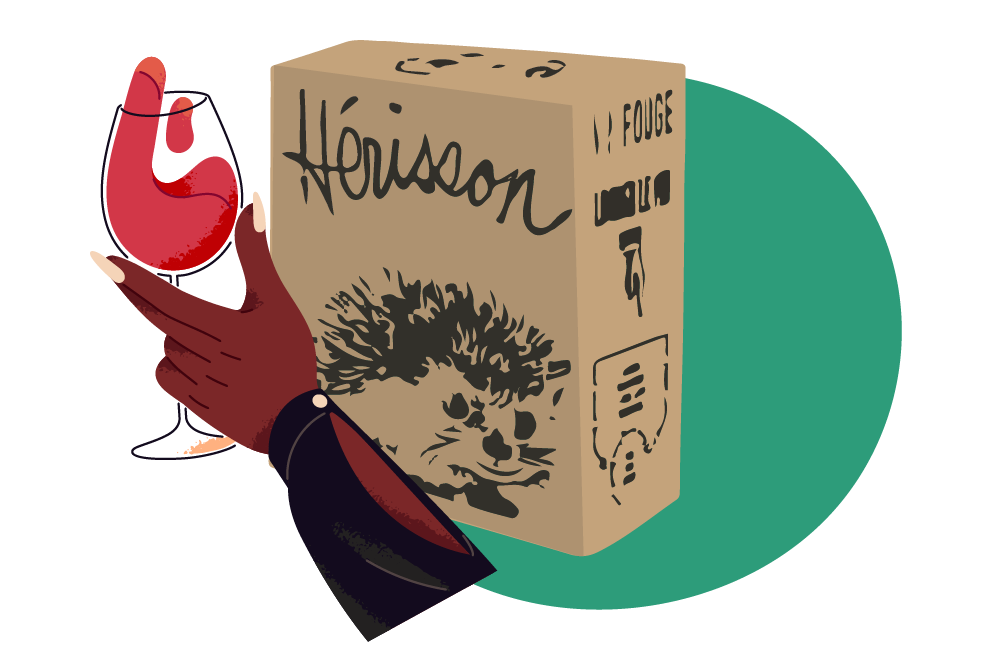
The RTD boom shows that consumers aren’t attached to traditional appearances. Boxed wine has always made some sense from a consumer perspective: you get more, it’s easier to store, it opens easily, and it can last. Problem is, it also screams “college dorm room” or “book club beverage of choice.” But now…it’s aesthetically pleasing!3
This holds in other areas of the beverage industry. Delicato’s Bota Box boxed wine was one of the big beneficiaries4 of circa 2020 packaging changes, for example.
Quality winemakers are trying out boxed wine with thoughtful, well crafted graphic design. The pitch is appealing: be the casual wine drinker who isn’t a snob. A bit of a rebel, even. Flout those pretentious norms. Not to mention the values-based win on ecological sustainability. We’ll see how it goes, but whether the world is ready for sophisticated boxed wine or not, these experiments reflect a desire to try new things – a desire that’s also visible in trendy orange, natural, and organic wine.
03
Hard Kombucha, Tea, and Maybe Coffee: Nontraditional Beverages
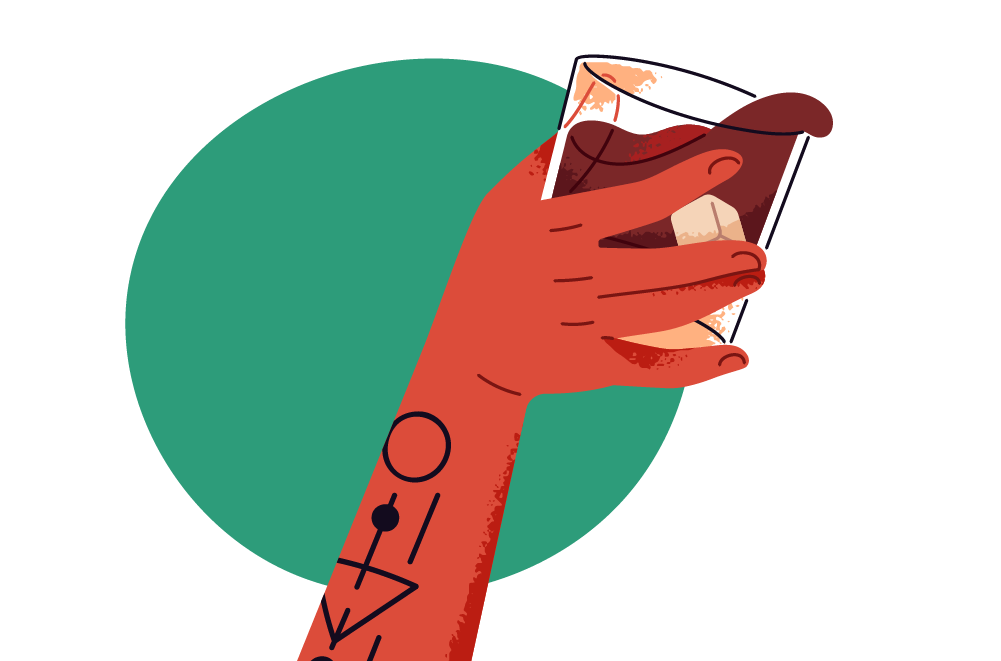
Unique beverage options go beyond packaging. Consumer readiness to be brave and eschew tradition extends to renewed interest in unconventional beverages. People are willing to think outside the box inside the box as well. The popularity of hard kombucha, ice tea, and – tentatively – hard coffee speaks to this trend.
Hard kombucha5 and hard ice tea both have discernible potential. In 2023, hard ice tea grew 39% in year-over-year dollars and 30% in year-over-year volume.6
Hard coffee has had a harder journey – with a huge spike and fall that led PBR to discontinue their take on the beverage. However, Dunkin managed to keep the category from completely going on ice by introducing a line of spiked coffees that saw expansion to a host of new states as recently as March 2024. So it isn’t time to write the idea off yet. However, it’s tough to tell at this time whether the expansion of their Spiked line is more due to its coffee or its ice tea options.
With the popularity of the espresso martini, hope springs eternal that someone can capture that bitter lightning in a can. If – knock on wood – Dunkin Spiked slows down, perhaps one of those successful RTD cocktail companies will class up hard coffee and make it work that way?
Beyond being fun alternatives, these options are also reflections of the broader functional beverages trend – kombucha in terms of probiotics and tea or coffee for adding caffeine to the equation.
04
Functional and Cannabis Beverages
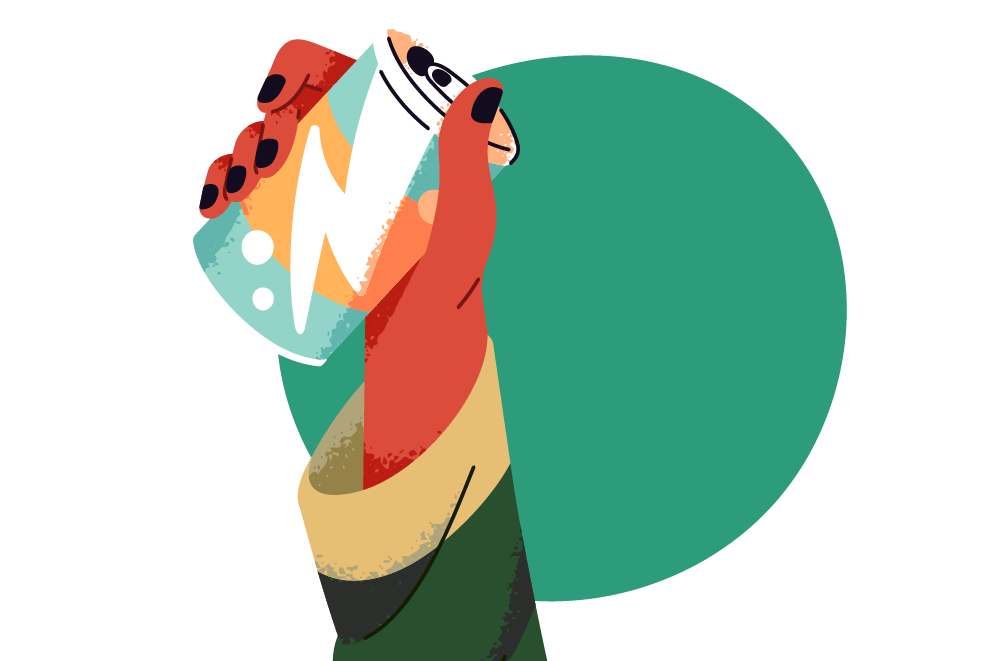
Unsurprisingly, cannabis beverages are a big deal8.
As the regulatory challenges (AKA winding down years of costly and ineffective prohibition) around this space continue to clear up, count on cannabis. Within the cannabis market itself, beverages are one of the fastest-growing segments for a reason. These drinks act faster than edibles and don’t impact the lungs like smoking or vaping.
They’re also worth keeping an eye on for the broader beverage industry for another reason: many younger people are seeking an alternative to alcohol. According to Gallup polling the number of adults under 35 who drink has declined 10% in recent decades.9
This search for an alternative mood-altering beverage goes beyond cannabis. There’s a growing interest in beverages with functional benefits10 such as mood enhancement, detoxification, and CBD infusion. This extends to integration of wellness-focused ingredients like adaptogens and nootropics. HOP WTR, for example, incorporates theanine and ashwagandha into their NA beverage. Just keep in mind when marketing that these wellness benefits are sometimes safer expressed in the language of vibes than proven science.
Still, they may help you adapt to the next trend we’ll discuss: the sober-curious movement. For mocktails to justify a price point comparable to cocktails, we have to address the missing “magic.” Modern as we may see ourselves, we all believe in a kind of alchemy when it comes to drinking. A spirit is romantic, transformative, alluring, another world. Beyond the physical effects of alcohol, there’s the psychological idealization of something which alters your mood and outlook.
With a drop of something like theanine (which naturally occurs in tea) or CBD, that mocktail reclaims the potion-like quality that makes a cocktail so alluring.
05
Non-Alcoholic Drinks: The Sober Curious Movement
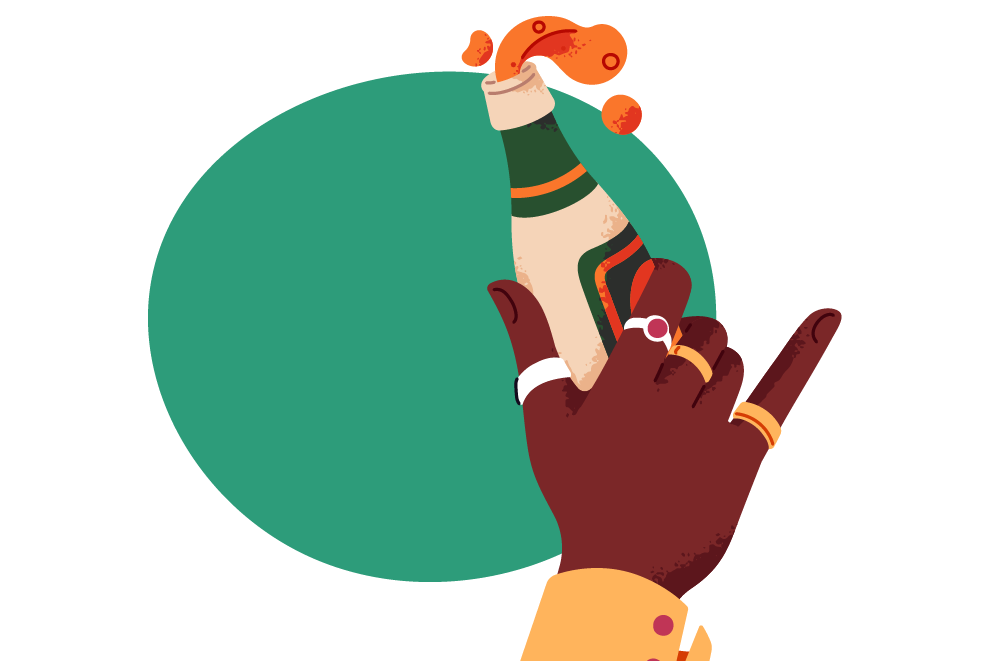
Related to all of this, of course, is the rise of the sober curious trend, a movement taking place especially among younger drinkers. To be clear, these aren’t prohibition era teetotalers making a comeback. Many “sober curious” people are still willing to drink on the right occasion, and even pay for something more premium as a result of their selectivity. But many people are becoming more conscious of their alcohol consumption.
Research in JAMA Pediatrics shows that, rather than a fad, this is an ongoing trend among young people: the percentage of college students 18-22 in the United States who claim to refrain from drinking alcohol went from 20% in 2002 to 28% in 2018.11
If you want doom and gloom about it look elsewhere though – success stories like Athletic Brewing Company12 highlight that there are winning strategies for non-alcoholic beer. Athletic is the top-selling beer at Whole Foods (that’s including alcoholic beers) and made TIME’s 100 most influential companies of 2024.
06
Social Isolation VS Bars as Third Spaces
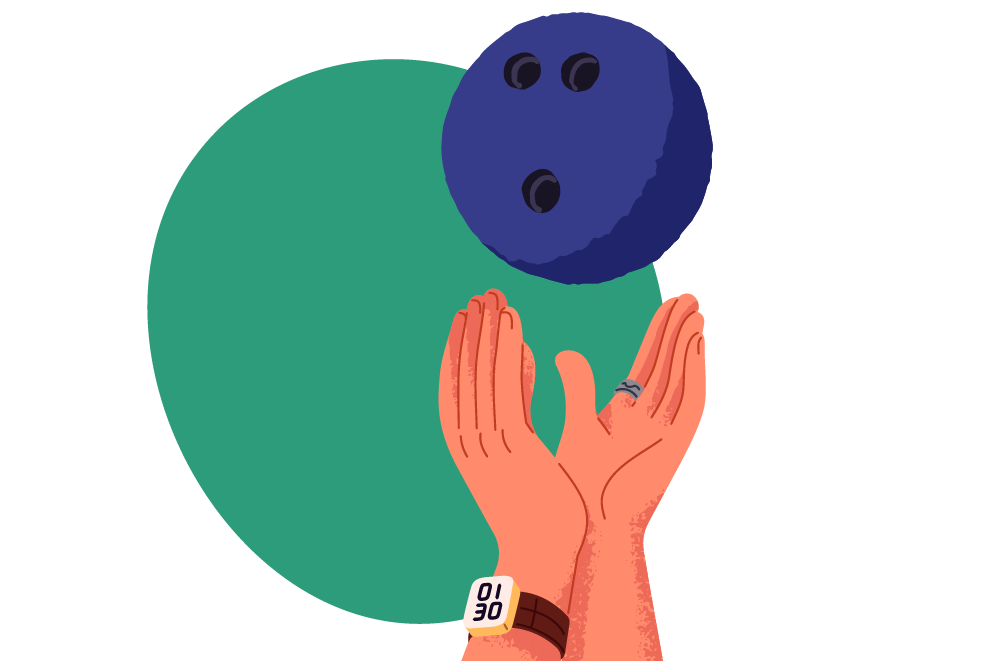
It’s a challenging time to operate on-premise locations like bars or restaurants which serve alcohol. With the rapid changes that have taken place in the industry, one owner was recently quoted in the LA Times13 saying “We can’t afford to stay open. We can’t afford to close.”
Not only are younger people sober-curious, Americans have fewer friends and go out less than in the past.14
While this trend was accelerated by the pandemic, it stretches back decades, with books like Bowling Alone from the early 2000s providing ample evidence that Americans spend more time alone and have fewer friends than in the 20th century. Civil institutions like churches, sports clubs, hobbyist groups, and so on have been in decline for decades – an existing state of social atomization and fragmentation that reached new heights in recent years.15
In the past, Americans consistently reported spending about 6 and a half hours a week with friends. But from 2014 to 2019, it suddenly dropped by 37%, to four hours a week.16 And that’s before 2020.
All of this brings us to the rise of “third place” discourse. People are looking for a place other than the workplace and the home to socialize. They want a “third” place. However, the stereotypical bar as it currently exists is not set up to appeal in an increasingly sober-curious culture. Many in the Third Place conversation on social media bemoan that the seemingly only social place available to people who want to make new friends is oriented around drinking.
There are, however, examples that point a new way forward. Bars and breweries are becoming hubs for diverse experiences, beyond just drinking. Activities like trivia, board games, upscale bowling, and other interactive options are gaining popularity. Mocktails and functional beverages could be part of this evolution too, offering non-alcoholic options.
This leads toward the idea of embracing the changing role of alcohol in our culture. We don’t have to throw away the value of what we’ve had. However, rather than just being reactive, it’s possible to think more about how the beverage industry can be a positive part of – and profit from – what is happening in society.
Venues and beverage manufacturers have a chance to collaborate in expanding experiences to meet a widening consumer demand. They have a chance to address America’s epidemic of loneliness by providing shared experiences that bring drinkers and non-drinkers together. Ultimately, this means reimagining drinking as a social activity to include moderate drinkers and those seeking non-alcoholic options, enabling a new “sober(ish) bar drinker” to enjoy bar social outings without feeling excluded or out of place.
Conclusion
It’s not just the beverage industry that’s changing. The role of alcohol in an increasingly fragmented consumer landscape is itself in flux. This fragmentation opens up endless avenues to try new things, away from the pretense and propriety of past norms. The insights might seem contradictory as a result – NA and lower ABV options are having a moment just as some hard seltzer brands in a narrowing market see success with higher ABV options. That, however, is what fragmentation looks like. Within one niche and another, individuals are making different decisions. Even supposed challenges around younger peoples’ limited drinking habits are also opportunities to evolve with the culture and stay relevant. Consumers are ready to be brave in all sorts of ways, whether that’s trying unconventional things or finding what feels healthiest for themselves – the beverage industry will gain the most from being brave too.
1. dentsu 2. SevenFiftyDaily 3. Cool Material. 4. Wine Business. 5. market.us 6. VinePair. 7. Beverage Wholesaler 8. MJBiz Daily. 9. Gallup 10.FSR 11.Forbes 12. Time. 13. Los Angeles Times. 14. dentsu. 15. The Guardian 16.The Week

